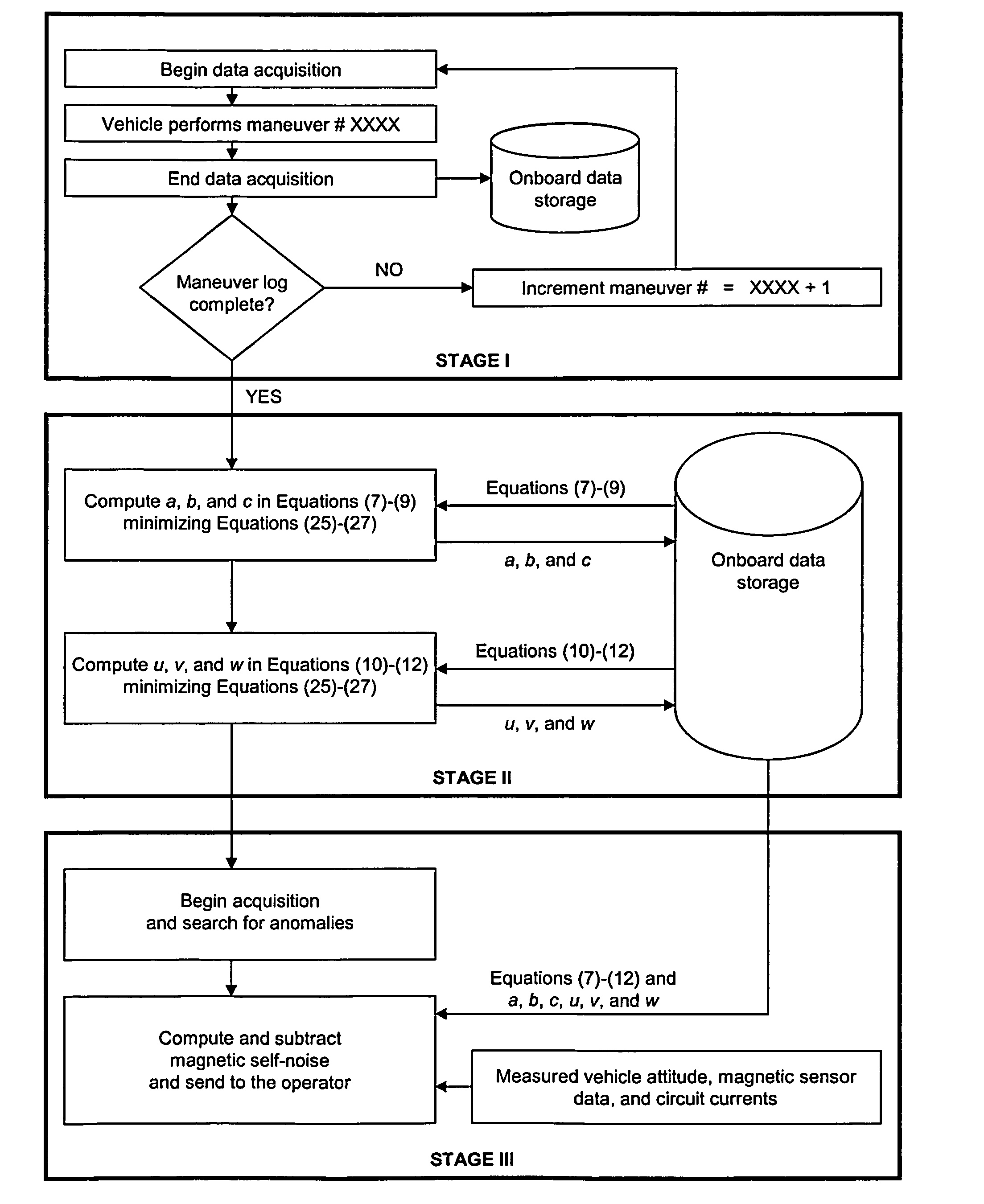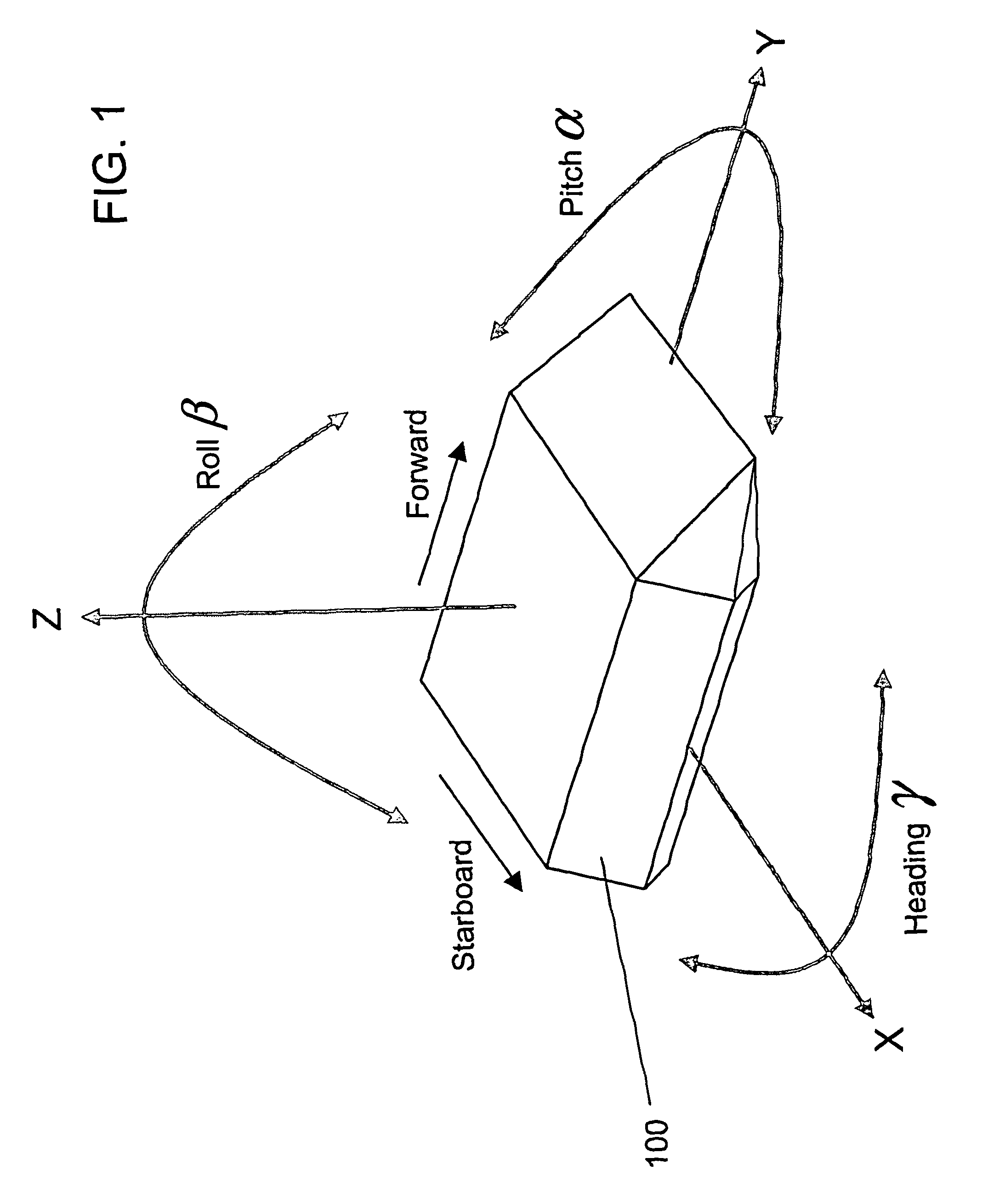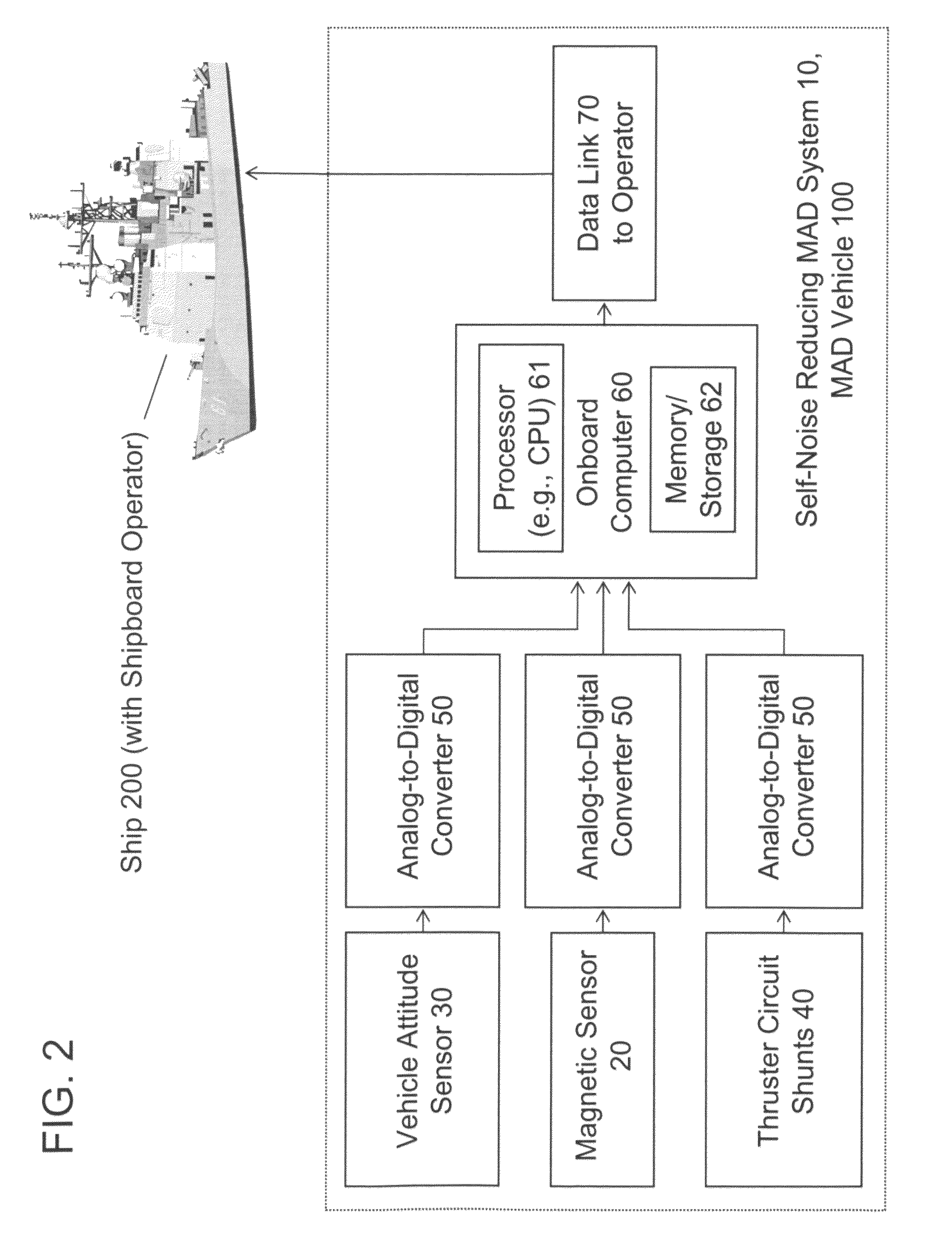Algorithmic reduction of vehicular magnetic self-noise
a technology of vehicular magnetic and self-noise, applied in the field can solve the problems of conventional approach being inadequate for any application, affecting the success of magnetic anomaly detection, and affecting the detection of magnetic anomalies
- Summary
- Abstract
- Description
- Claims
- Application Information
AI Technical Summary
Benefits of technology
Problems solved by technology
Method used
Image
Examples
Embodiment Construction
[0025]Mathematical characterization of vehicular magnetic self-noise begins with a decomposition of the vehicular magnetic self-noise in accordance with magnetic source. A vehicle has three main sources of magnetization that contribute to its self-noise. These three magnetic sources are (i) induced magnetization (“IM”), (ii) permanent magnetization (“PM”), and (iii) stray fields (“Stray”). The term “induced magnetization” as used herein generally refers to the distortion of the earth's ambient magnetic field through the ferromagnetic material of onboard objects. The term “permanent magnetization” as used herein generally refers to the magnetic fields produced by ferromagnetic materials of onboard objects. The term “stray fields” as used herein generally refers to magnetic fields created by electrical currents in onboard circuitry.
[0026]With reference to FIG. 1, a Cartesian coordinate system is assumed for the three-dimensional space of interest, which contains the magnetic anomaly d...
PUM
 Login to View More
Login to View More Abstract
Description
Claims
Application Information
 Login to View More
Login to View More - R&D
- Intellectual Property
- Life Sciences
- Materials
- Tech Scout
- Unparalleled Data Quality
- Higher Quality Content
- 60% Fewer Hallucinations
Browse by: Latest US Patents, China's latest patents, Technical Efficacy Thesaurus, Application Domain, Technology Topic, Popular Technical Reports.
© 2025 PatSnap. All rights reserved.Legal|Privacy policy|Modern Slavery Act Transparency Statement|Sitemap|About US| Contact US: help@patsnap.com



